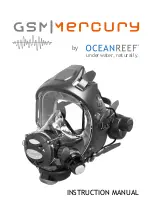
Concepts and features
R&S
®
ZNA
251
User Manual 1178.6462.02 ─ 20
4.7.5.4
True differential mode with frequency converters
If the
is combined with true differential mode, the analyzer
generates a true differential or common mode stimulus signal at a calibrated reference
plane which is located after two frequency converter ports. To achieve this, two fre-
quency converters with independent sources are combined to form a balanced con-
verter port. The frequency converters must provide the RF drive signal simultaneously
so that a third, independent LO signal is required.
Depending on the network analyzer type and the number of independent sources avail-
able, different test setups are possible.
4.7.6
Pulsed measurements
Option R&S
ZNA-K7
Measurements on pulsed RF signals are required in many areas of RF and microwave
technology. Pulsed signals are used in mobile phone applications and radar systems,
and amplifiers are typically designed for pulsed rather than continuous wave (CW) con-
ditions.
The analyzer performs pulsed measurements in analogy to a time sweep (i.e. at con-
stant receiver frequency), but with a much higher sampling rate. Option R&S
ZNA-K7
provides configuration of the internal pulse modulators and pulse profile measure-
ments. The measurement bandwidth can be increased up to 50 MHz.
●
Option R&S
ZNA-K7 requires the
R&S
ZNA-K17.
For better time resolution, pulse profile measurements use the
option R&S
ZNA-B7, if available.
4.7.6.1
Live pulse analysis with R&S
VSE
vector signal explorer software brings the experience and power of
Rohde & Schwarz signal analysis to a desktop PC. Its "Pulse measurements applica-
tion" (option
) can analyze parameters such as pulse duration, pulse
Optional extensions and accessories
















































